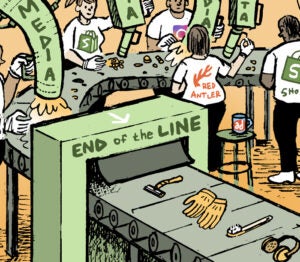Data clean rooms dominated many conversations around privacy in the digital ad industry throughout 2022.
But the absence of standardization meant there was also a lot of ambiguity around clean rooms and how they should be used.
Even today, a variety of solutions bill themselves as data clean rooms, further contributing to questions and confusion.
Before the industry embraces clean rooms, it’s critical to have clarity on their true strengths and a set of agreed-upon standards.
Prioritizing privacy
Against this backdrop of unknowns, the first round of the IAB Tech Lab’s clean room standards will alleviate some uncertainty. The IAB’s January report, State of Data 2023: Data Clean Rooms & the Democratization of Data in the Privacy-Centric Ecosystem, hailed data clean rooms as “essential for audience insights and measurement.” However, as an industry, we must explore what data clean rooms can and can’t accomplish.
Privacy solutions, like clean rooms, are appearing as a symptom of the evolution of the advertising ecosystem. We’re course-correcting on bad data practices. Currently, 98% of advertisers are concerned about online privacy and identity changes affecting customer and audience trust. And 87% are seriously worried that consumers will stop buying from them if they feel their data privacy is not respected.
It’s easy to see why it’s tempting for brands to view clean rooms as a catch-all solution to their privacy concerns. But they shouldn’t. Data clean rooms have to be viewed as one part of an end-to-end workflow, acting as a way to enrich data as part of a larger activation platform.
The data ownership in clean rooms
One of the biggest challenges for brands today is that, when it comes to activating data, they are limited to what is addressable on the open web. The percentage of addressable open-web audiences is thought to be as little as 30%, with 70% of consumers disabling cookies or browsing in hidden environments.
As a result, advertisers are striving to build relationships with other data owners, such as publishers, since they have insight into consumer behaviors based on first-party data.
AdExchanger Daily
Get our editors’ roundup delivered to your inbox every weekday.
Daily Roundup
Data clean rooms can help advertisers understand audience commonalities with their publisher partners in a privacy-centric way. Publishers and advertisers can match authenticated users and optimize based on audience overlaps without ever exposing their raw first-party data to their partners. In this case, each data owner can protect the value of their data and their businesses.
Data clean rooms can even help enrich data. But there’s a caveat. When this data isn’t part of an activation platform powered by publisher cohorts, privacy can’t be fully protected. To ensure privacy, cohorts need to be the currency clean rooms activate against – not individual consumers. And by using cohorts to model advertiser data across publisher first-party data, advertisers can still reach their full audience.
Moving forward with certainty
With so much uncertainty around clean room capabilities, the IAB Tech Lab’s clean room standards will provide advertisers and publishers with more transparency. They will also define the role that clean rooms will play in responsible and scalable advertising.
With standards and greater understanding in the product offerings, digital advertisers will be better equipped to use clean rooms for their intended purpose: as a starting point in an end-to-end collaborative workflow for data owners who want to connect, plan, build and activate in a privacy-safe way.
“The Sell Sider” is a column written by the sell side of the digital media community.
Follow Permutive and AdExchanger on LinkedIn.













